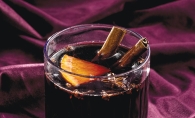
The most common reaction I get when asking friends about Riesling is: “Riesling is too sweet!” Sure, Riesling wines can be sweet, but quite often they’re far from it. Dry Rieslings are some of the most popular food-friendly wines available. Their natural acidity triggers a mouth-watering reaction that goes perfectly with many foods. My goal here is to offer basic clues to identify dry Rieslings.
First, to take the mystery out of determining sweetness levels, many New World producers simply label the wine as “Dry Riesling.” That’s easy enough. Then, some producers include a sweetness scale on the back label. An arrow at the left end of the scale suggests dry; an arrow on the right end suggests sweet.
Things get more difficult in the Old World. German and Austrian wine labels can be intimidating and difficult to decipher. They include so many words with formal meanings. Here are the best clues:
Look for “troken” on either the front or back labels. Troken means “dry” in German.
Check the alcohol level. The lower the level, the sweeter the wine. Lower alcohol level means not all sugars in the grape juice were fermented out, or converted into alcohol.
Shed your long-held bias; find and try a dry Riesling. Delish. —Andy Carl
Andy Carl
Woodbury’s Wine Wizard









